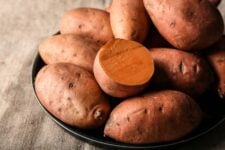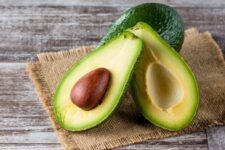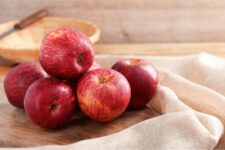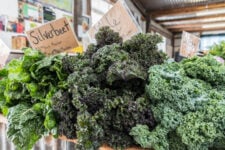Are you a fan of kiwi? This sweet-and-sour green wonder, also known as the Chinese gooseberry, is a small, oval-shaped fruit. It has fuzzy brown skin, bright green flesh, and tiny black edible seeds. It’s believed this fruit originated from China and swept its way across the South Pacific and into different parts of the world.
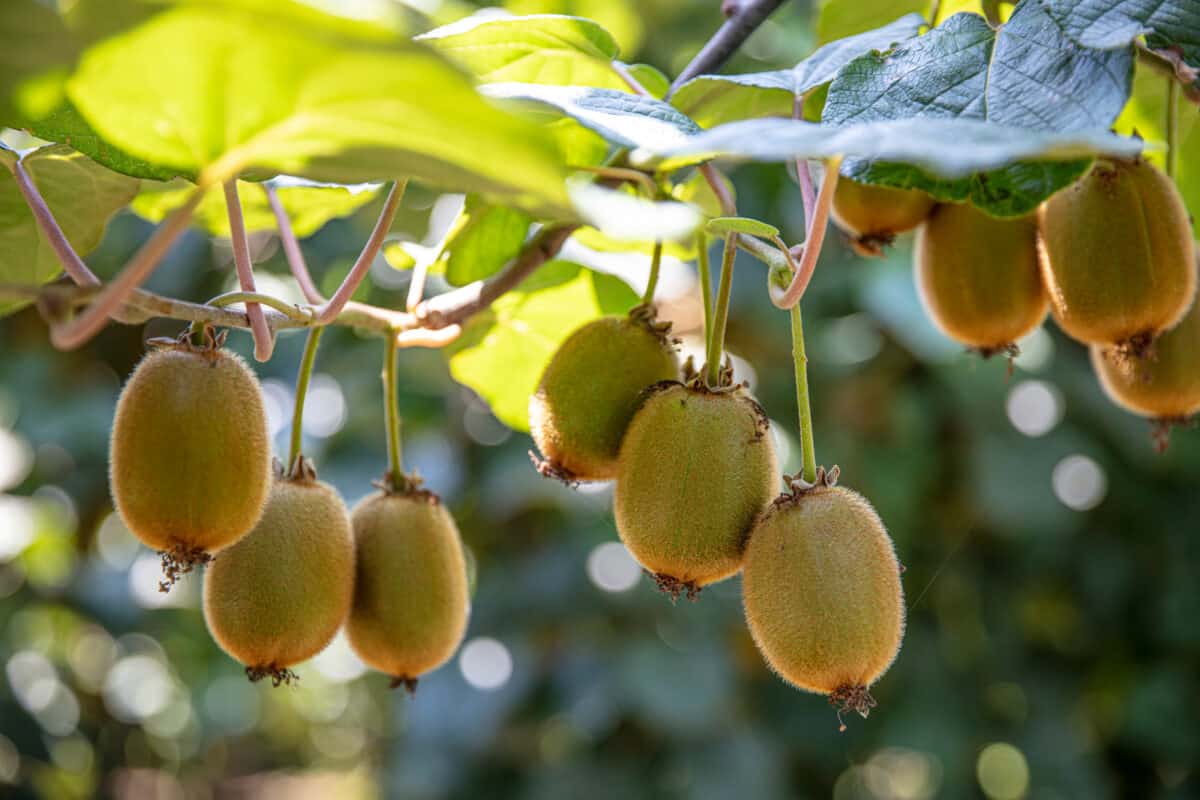
Aside from boasting a unique, tropical flavor, this fruit is packed with essential nutrients like vitamin C, vitamin K, potassium, and folate. Kiwis are a naturally gluten-free food that’s low in fat and calories with a decent dose of fiber (1).
Although it’s available in many places year-round, knowing when kiwi is in season has its benefits. Whether you want to garnish a salad, toss some in a smoothie, or just consume whole, you can’t beat the taste of a fresh kiwi. So keep reading to find out when kiwi is in season so you can enjoy it at its best.
Different Kiwi Varieties and Their Typical Seasons
This sour staple comes in several varieties, with the most common being the green kiwi. This is the version most of us think about when we hear the word “kiwi.” It has its signature bold green flesh and tart-yet-sweet taste. The texture is juicy and soft with pops of black edible seeds that offer a subtle crunchiness.
There are also golden kiwis, which also go by the name yellow kiwis. They have a sweeter taste compared to the tart green kiwi, along with smoother skin, yellow flesh, and fewer black seeds. The texture is firmer and less juicy, and they grow smaller in size.
Then you have baby kiwis, also known as kiwi berries. This is a smaller variety of kiwi that’s roughly the same size as a grape. Unlike their larger counterparts, baby kiwis have smooth edible skin, making them perfect for popping in your mouth whole. You can expect a milder flavor with subdued tartness and fewer crunchy seeds. The flesh is sweeter and more delicate as well.
Since kiwis aren’t cold hardy, you’ll find most domestic versions grown in California, primarily around Sacramento and San Joaquin Valley. It’s a relatively new crop to the region, with the first plantings taking place around 1970. But California kiwi production didn’t take off until the mid-80s, with 8 million trays exported from the area in 1988 (2).
The US green kiwi season starts around November and lasts until mid-May. These little green gems are typically harvested in November and then stored for 4-5 months, allowing us to enjoy domestic kiwi for a good chunk of the year.
Golden kiwis typically have a shorter growing season, with an availability spanning December to March. Kiwi berries have an even smaller growing season that lasts from September to part of October due to the brief shelf life (3).
Kiwi Season Different Parts of the World
While you’ll find kiwi grown in the US, it has a very small market share compared to the rest of the world. Kiwis are a dream to ship, thanks to the durable nature of this fruit. The skin is resistant to bruising and damage, and it has a long shelf life, making it easy to transport over long distances.
Since China has bragging rights for spawning the original kiwi plant, it only makes sense that it takes the lead as the largest exporter (4). You’ll find the majority grown in the Yangtze River Valley, where the average mean temperatures of 20° and 22°C boast perfect conditions for growing kiwi (5).
New Zealand comes in second for kiwi production, for reasons more than just sharing a name with its people and famous bird. The coastal areas have a moderate climate, with warm summers and mild winters that are perfect for growing this temperate weather-loving fruit.
Another factor impacting New Zealand’s kiwi economy is its location. Since the country is south of the equator, it grows Kiwis from May to December, offering a fresh supply during the offseason for the United States.
There are a few other honorable mentions for kiwi production; Italy is the third-largest producer of kiwis globally, producing 320,000 tones annually (6). Most of the farming hails from the central and northern regions which boast a temperate climate.
Chile also has a long kiwi growing season, spanning from April to November, making it a significant exporter of the fruit. Greece produces mostly green kiwis, with a season running from October to March.
Benefits of Consuming Kiwi During Its Peak Season
The fact that you can enjoy kiwi any time of the year is a pretty cool feature of living in the 21st century. But like many modern marvels, it does come at a cost.
One of the biggest concerns is the carbon footprint created by transporting the fruit. Shipping kiwis such long distances, especially from New Zealand, requires a significant amount of fuel. This contributes to greenhouse gas emissions and, ultimately, climate change.
There are also consequences in the flavor department as well. Importing kiwis from overseas also means that the fruit has to be harvested and packaged well in advance of its arrival, resulting in a loss of freshness and taste.
Consuming locally grown kiwis in the United States can be a more sustainable and environmentally friendly option. When you buy kiwis that are grown in the US, you support local farmers and reduce the carbon footprint associated with transportation. Plus, local kiwis are often fresher and more flavorful since they don’t have to travel as far.
Recipes To Try During Kiwi Season
Does this post leave you with a hankering for the sweet and sour fruit? There are plenty of ways to enjoy kiwi, from refreshing smoothies to zesty salsas and even bread! Here are some of my favorite kiwi recipes.
- Kiwi Smoothie – A tropical, hydrating smoothie bursting with sweet citrus and omega 3s.
- Kiwi Bread – An exciting flavor combination that tastes like banana bread with a twist.
- Kiwi Salad – A bright salad featuring walnuts, fresh mint, and cucumbers tossed in a tangy dressing.
- Golden Kiwi and Blueberry Bruschetta – A perfect party appetizer that combines fruity sweetness with tangy feta.
- Kiwi Lemonade – If you didn’t think lemonade could get any more refreshing, try adding kiwi. It’s a game-changer.
- Kiwi Avocado Salsa – A green salsa merging tart kiwi with creamy avocado and fiery jalapenos.
- Green Smoothie Bowl – Frozen banana, spinach, and almond butter make up the base of this creamy smoothie bowl, with kiwi making a welcome addition.
- Breakfast Chia Pudding – Spruce up your morning chia pudding with some freshly sliced kiwi for an extra punch of tartness.
- Kiwi Sorbet – This two-ingredient recipe creates the ultimate refresher on a hot summer day.
- Pineapple Kiwi Salad – A fun twist on fruit salad featuring juicy pineapple, tart kiwi, and chewy coconut.
- Roasted or Grilled Salmon with Kiwi Balsamic Salsa – Perfectly cooked salmon brightened up with a tangy, fruit salsa.
- Blackberry Kiwi Chicken Salad – A light-yet-hearty salad bursting with pops of blackberries and kiwi.

